Moorland Caver (2003)
NGR: SE 575835
Altitude:150m
Length:171m
Depth: 43m
Access: Permission to descend is not granted
Grade: III
Entertainment Value: III
Entrance in slumped hollow, beneath tree, a few metres down from the forestry track.
A short climb of 3m leads to a broken pitch of 23m (laddered as one using tree as belay) lands in Main Rift. North West end of the rift pinches out but heading South East and down leads to a choke, left of choke is the route to
the new series, a crawl past two squeezes ends on a boulder bridge with 10m pitch into wide rift. Climb over choke and down into rift, right is two branches, the first leads to a 5m climb down to the deepest point. Straight on leads to 9m pitch and a large rift passage. Three quarters of the way down entrance pitch (behind the ladder) a small passage leads to the head of a 6m pitch, the bottom of pitch, joins the large rift which connects to the previously undescended 9m pitch.
Tackle:
Entrance: 25m ladder, sling and 30m lifeline
Boulder bridge:10m ladder, spreader and 15m lifeline.
9m pitch:10m ladder, spreader and 15m lifeline
6m pitch:use the end of main pitch ladder
History
First descended by Paul Fitton in 1949.
A Late Neolithic handled beaker was found on ledge by John Ford and is now on display in the Rotunda Museum in Scarborough.
Extended in 1981and 1997 by M.S.G.
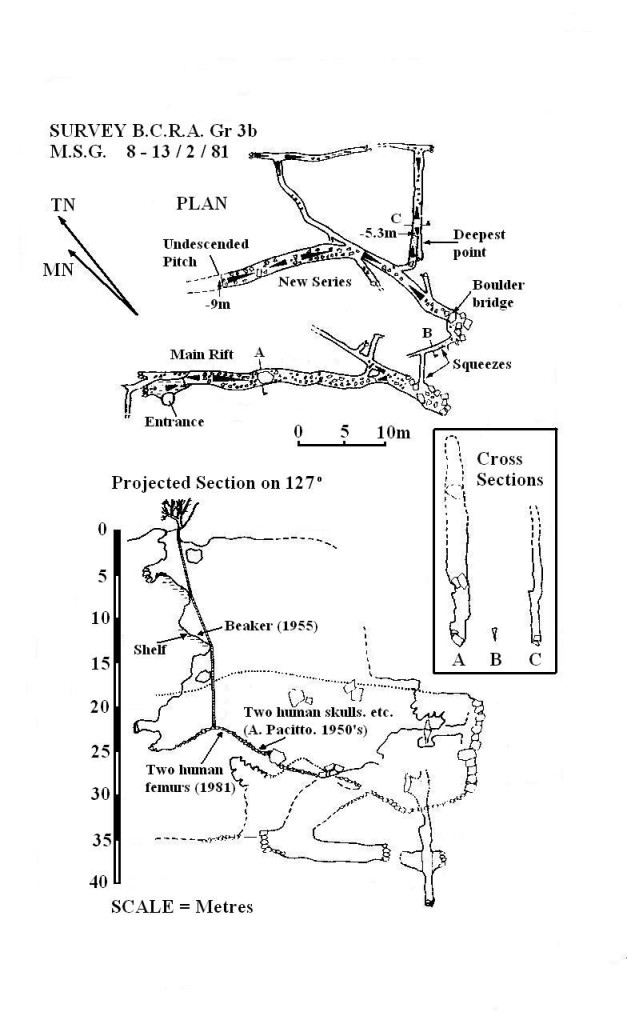
BCRA Cave Science – Vol.2 No.12 – The Ryedale Windypits (1950)
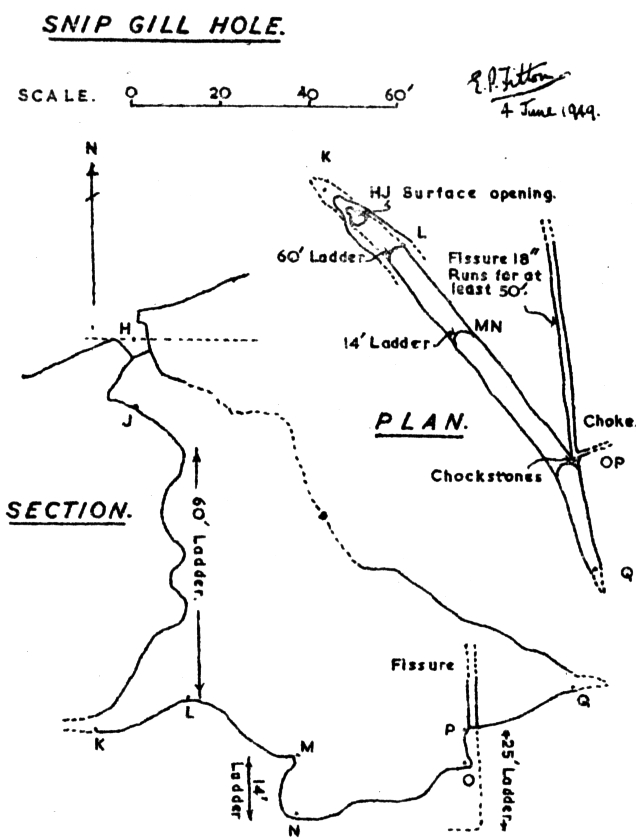
Yorkshire Ramblers Club – Journal 7 (1952)
The local interest we had aroused put them on to three others, Snip Gill, W. of Antofts, 109 ft.
Northern Caves Volume 5 (1974)
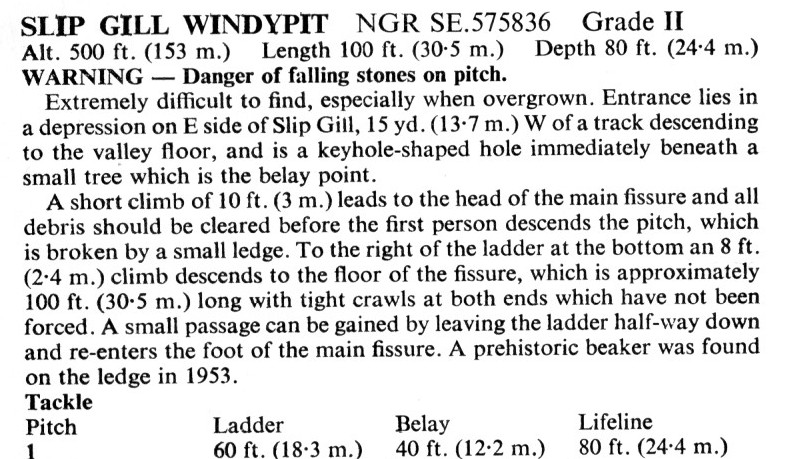
BCRA Transactions – Vol.3 No.2 – The North Yorkshire Windypits (1976)
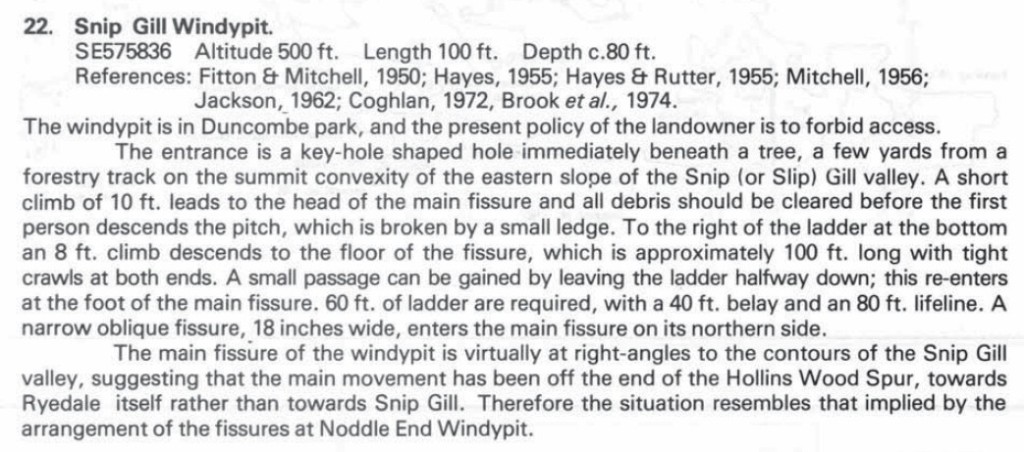
BCRA Cave Science – Vol.9 No.1 – The Windypits in Duncombe Park (1982)
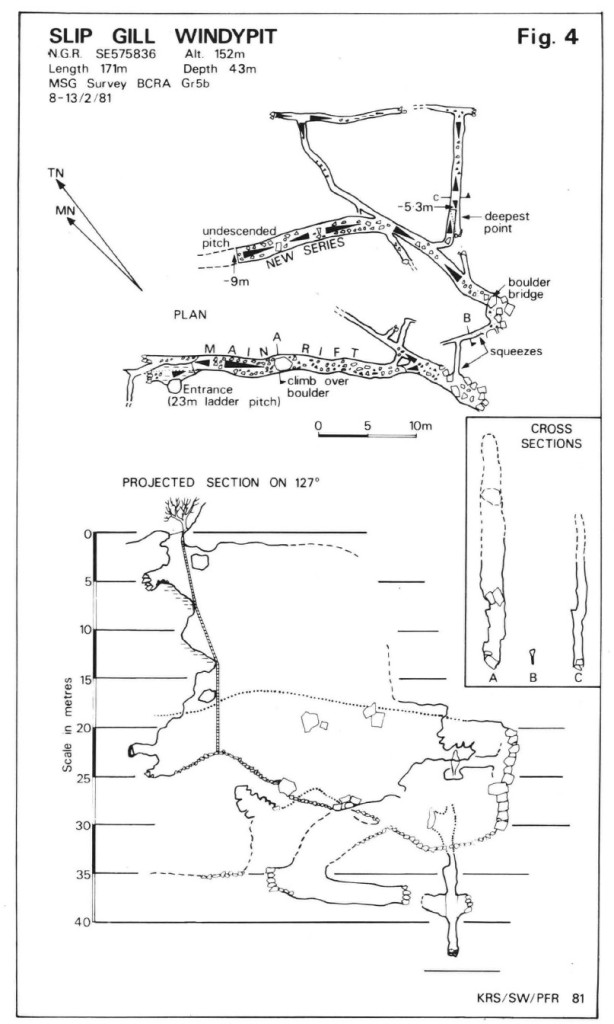
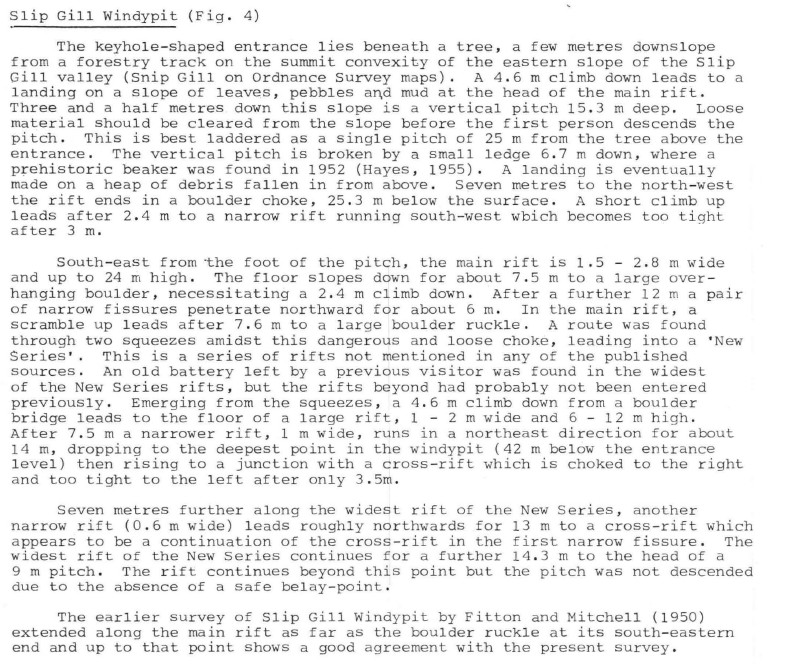
Yorkshire Archaeological Journal Vol 56 (1984)
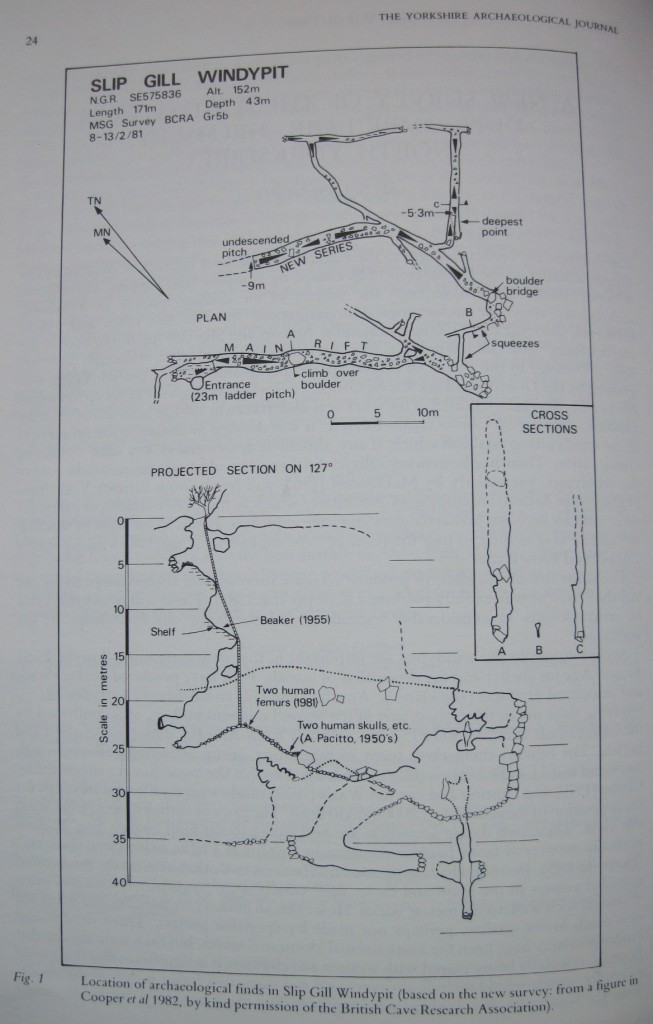
Life and Death in the Ryedale Windypits Near Helmsley, North Yorkshire
Stephany Leach, University of Winchester,
The human remains from Slip Gill Windypit were found at the base of a deep pitch or sheer drop below a small, sloping entrance chamber. While on a site visit it was noted that the atmosphere, even with modern caving equipment to light our descent, was unnerving and sinister. Looking out over the edge of this upper ledge it was not possible to see the floor below, only a pitch-dark abyss. This Windypit was only partially excavated, but the remains of four people were recovered. These comprise of two adults, a man and a woman, and two younger individuals, one possibly male, both dying during their late teens or early twenties. The mandible (lower jaw) of the younger male exhibited evidence of a cut from a wide sharp blade, most likely from an axe (Fig 1).
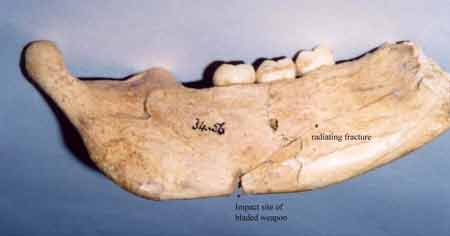
Fig 1: Slip Gill mandible exhibiting impact site of bladed weapon and radiating fracture
The angle of the wound suggests that it was probably caused when a blade passed through the young man’s neck during the act of decapitation. In such cases, the lower border of the mandible is often damaged, particularly if the head is held down and slightly to one side.
Two radiocarbon dates generated from the bones of these people suggest that they lived during the very late Iron Age or the beginning of the Romano-British period, during the transition to Roman rule in this area. This was a turbulent time in British prehistory and there are several examples of people meeting violent deaths and their bodies placed in natural, liminal locations, for example Lindow Man. It has been suggested that these deaths relate to the encroaching presence of the Roman military, representing sacrifices to the gods in an appeal for aid. Did the Ryedale Windypits form another arena for such ritual activity?


